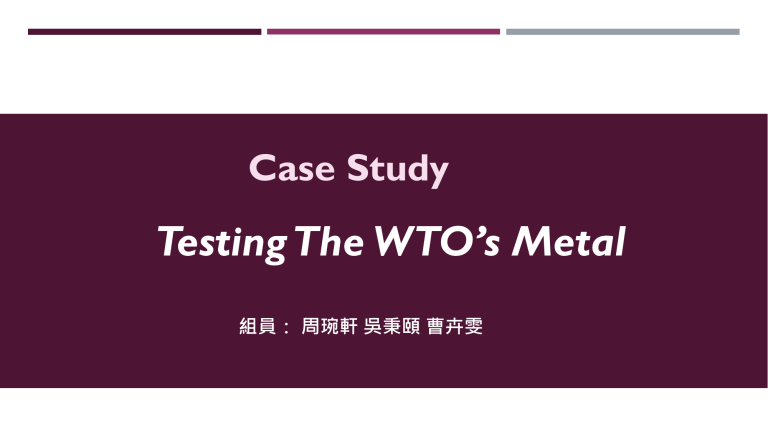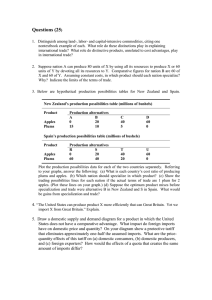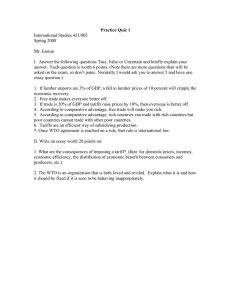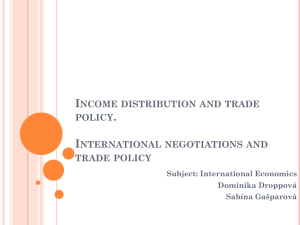
Case Study Testing The WTO’s Metal 組員: 周琬軒 吳秉頤 曹卉雯 Historical Background Timeline March 2002 July 2003 December 2003 November 2003 Background of U.S Tariffs The typical steel tariff in 2002: between 0% and 1% The US joined WTO in 1995 The North American Free Trade Agreement (NAFTA) President George W. Bush’s commitment to free trade Background of The US Steel Market More than 30 US steel makers went bankrupt March 2002 What US Government Imported steel products Real Reason Politics 8-30% tariffs Political Reason Crucial swing states in the 2004 election March 2002 EU Japan China South Korea File suit against US steel tariff WTO July 2003 Ruling WTO panel agreed that the U.S action was unjustified November 2003 The Decision of WTO Statement: US had not been imposed during a period of import surge and steel imports dropped during 2001-2002 Sanction: $2 Billion November 2003 U.S Reaction after the verdict Still tried to keep the tariff going In retaliation The EU threatened to impose tariff on U.S products from political swing states December 2003 Result US backed down and withdrew the tariff Theory What is “Tariff” ? Purpose: • A tax on imports • Imposed by governments • Raise the price of imports • Known as a trade barrier • Restriction and protection • Protect domestic production and jobs • Protect certain essential industries or strong political influence • Limit or reduce the quantity of the imported good Tariff’s reason and influence in Case Study: Reason • Global steel become overcapacity, making prices fall sharply • A large number of steel plants went bankrupt and caused workers to lose their jobs • President Bush’s upcoming elections Harm • Inevitably lead to an increase in domestic steel prices and related products • Consumers will have to pay more money for the product • Increase the risk of trade war Trade Liberalization • Trade liberalization promotes free trade • Free trade is the opposite of protectionism • Buy cheaper and better-quality products • Provide competition and opportunities for innovation • Lose some employment opportunities • Lead to uneven economic growth • Contain income distribution issue • Both free trade and protectionism have people support Protection • Often raise a country’s national welfare Case Study Caused a loss of $30 million and 200,000 job losses Lead to retaliation ruling by WTO Welfare: Loss was bigger than Gain The Optimum Tariff Gains = Losses For Big Country (e.g., U.S.) • Maximize national welfare • Additional gains gained from the improved terms of trade offset the additional losses caused by the distortion of production and consumption because of the imposition of tariffs. Free trade, 0 Both big countries adopt optimal tariffs → Trade Retaliation Examples & Cases Related ? Would the government of the world's most powerful nation really allow an international organization to tell it to remove a politically important tariff? 2003/12 The U.S Removed The Steel Tariffs Key point: Threat by the European Union EU →Received WTO clearance to take retaliatory action. → Impose tariffs on more than $2 billion in U.S exports. What will happen when the WTO rules in favor of smaller economies against major economic powers like the United States or the EU? 2005/3 WTO Agreed With Brazil’s Claim U.S. subsidies to cotton producers were illegal. The U.S by 2009 had made only partial moves toward compliance. WTO authorized Brazil to retaliate with substantial sanctions on U.S. exports. 2010 Brazil Withdrew Its Complaint It made a side deal to pay Brazil hundreds of millions of dollars in compensation. Thank You for Listening





